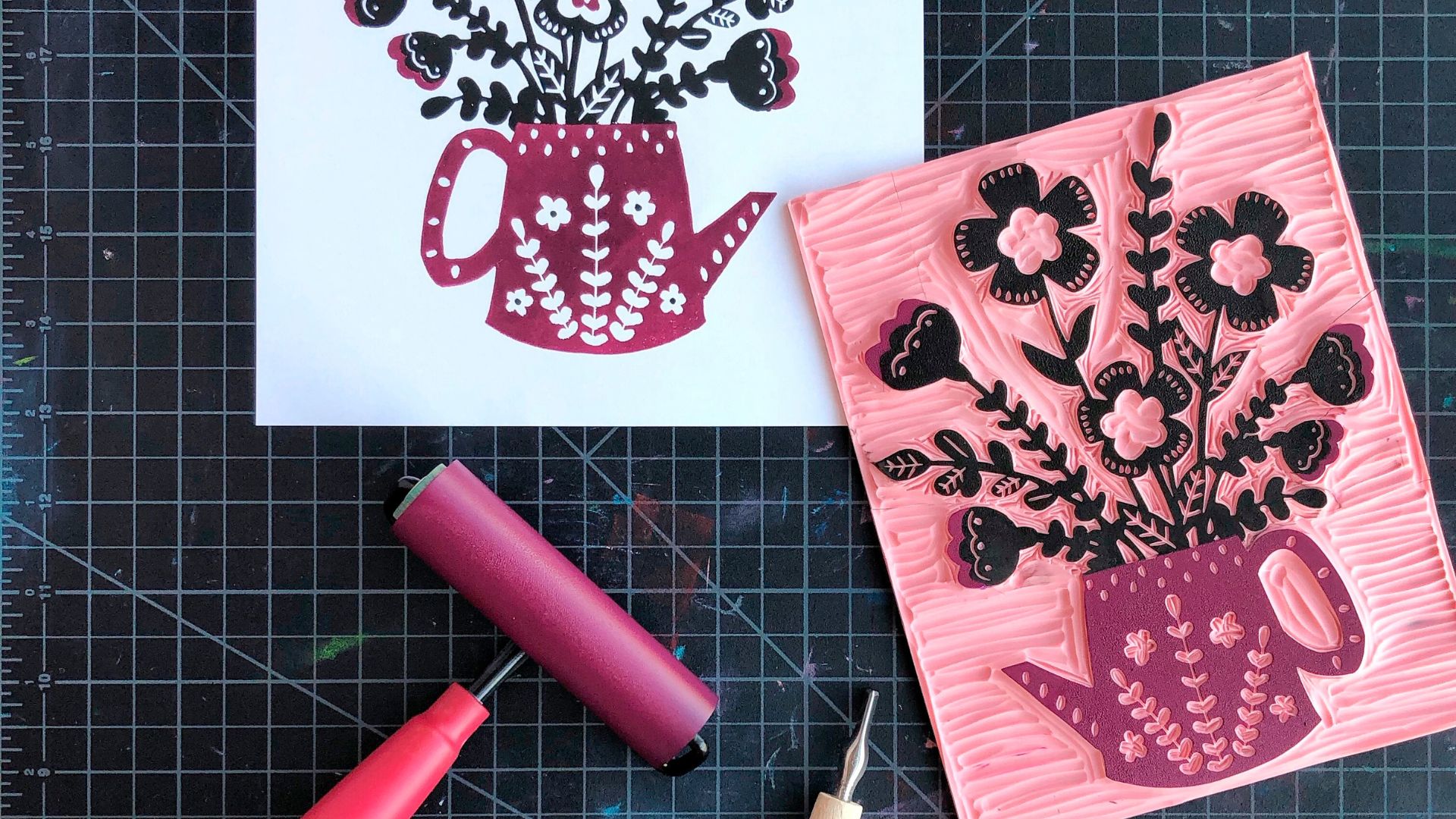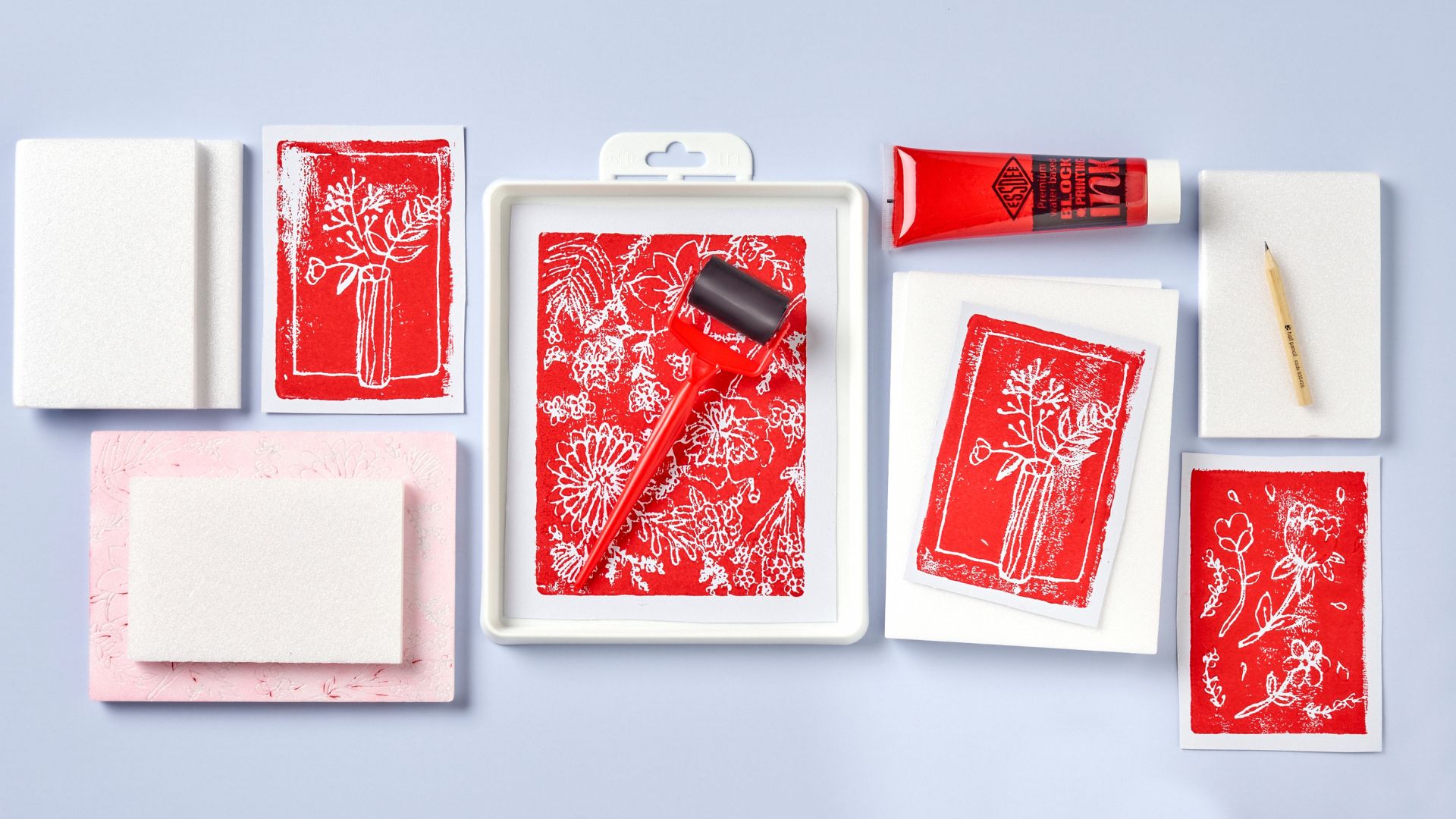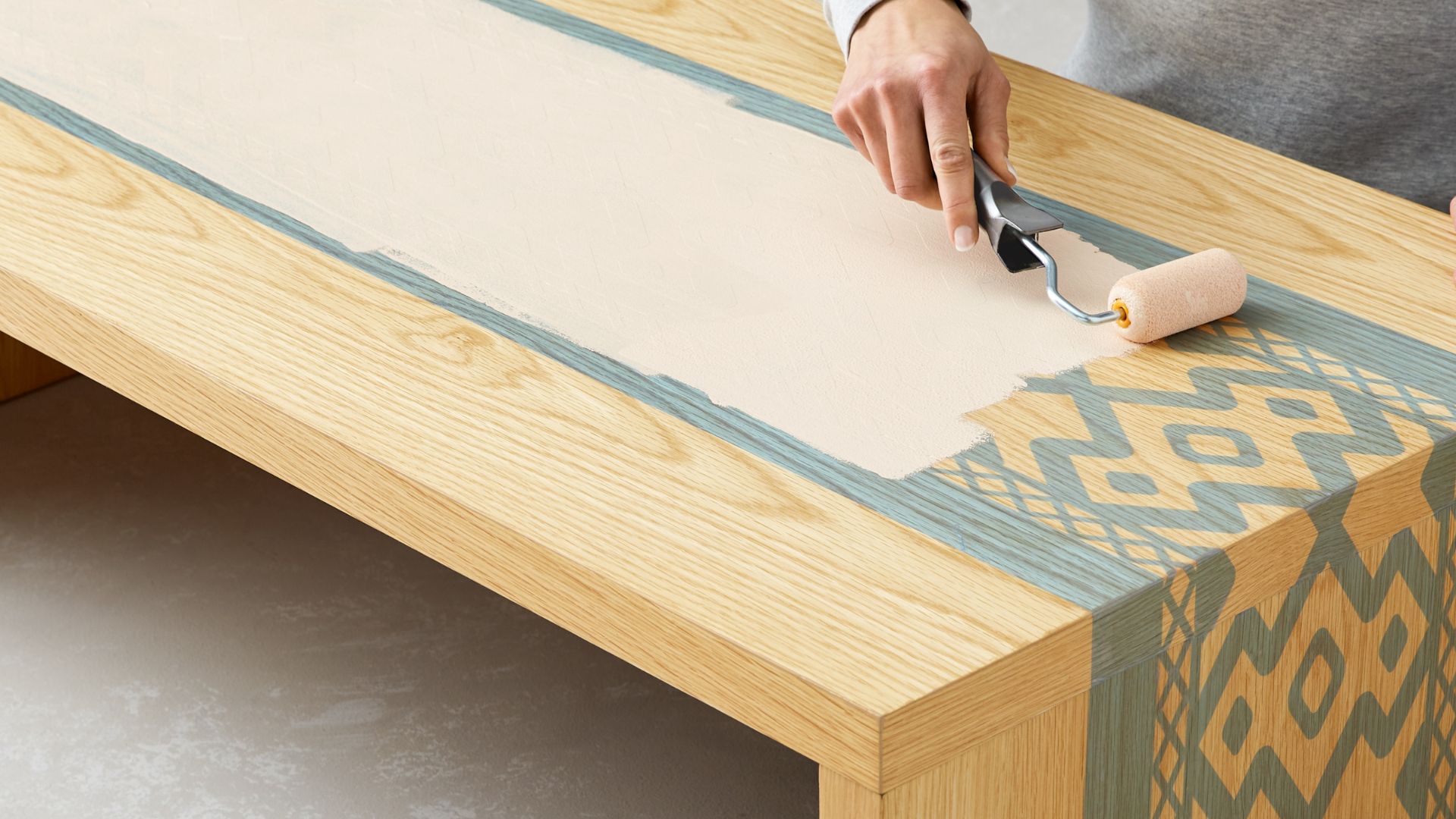 | ||
| Your browser is not supported. | ||
|
Please browse our site using any of the following options:
| ||
Screen Printing & Printmaking Buying Guide

The art of printmaking is one that goes back thousands of years, and its continued popularity just goes to show how much fun this style of art is! Making prints is a foolproof way to help you make many perfect copies of the same design, but there are a few different ways you can go about it.
At Spotlight our vast range of printmaking supplies means you can try your hand at screen printing, block printing and lino printing by getting everything you need in one place. From raw carving materials to beautifully made carving tools and vibrantly coloured inks, you can find everything you need for printmaking here!
Quick Links
What Is Printmaking?
Printmaking involves using a single template with a design on it (like a wooden block, a piece of lino or a screen) to create multiple designs on a surface like paper or cloth. The template has its surface covered in dye or ink, which is then pressed down like a stamp to create multiples of the same design. The template can be used repeatedly as long as it is taken care of (meaning it is cleaned and stored correctly when not in use). Making quality templates invaluable for artists and crafters who like to sell work featuring their designs.
Templates can be made out of many kinds of materials, but the most common you'll find are those made out of wood, lino and on a mesh screen. We'll detail each kind here, so you can choose which one you want to try for your next printmaking project!
Types Of Printmaking
Screen printing
Printmaking using a screen involves using a mesh screen with a wooden frame as your template, but how you get your design onto the screen is what can be tricky. Many young artists start out screen printing by making a stencil out of paper that is strong and glossy. You lay the stencil over the mesh, place the mesh screen over the material you want to decorate and then apply a layer of paint on top of the mesh. The paint will seep through the mesh but not your stencil, creating an image on the other side.
You need to use strong paper so it doesn't buckle when the paint is used, but otherwise this is a quick and easy way to use a screen to make your prints.
The second and more professional way to use screen printing is with a technique called photo emulsion. This involves using light, usually UV, to transfer an image onto the mesh screen. The image has to be black and white, but it can come from a photo, a drawing or a computer-generated image. Your image must be laser printed, as ink-printed images will be ruined when you wash the image with oil, which is necessary to make the white areas of your stencil translucent.
Once your image has been pressed onto the screen, an emulsion is applied to the screen in a dark room and left to dry. Once dry, you can use a UV light on the screen to cure the emulsion, which sets your image onto the screen. Then the screen is washed out to remove the excess, and you're left with the black areas of your image on the screen - a permanent and durable stencil that can be reused as much as you need!
What you need for screen printing
If you'd like to try screen printing at home, here's what you'll need:
- Screen printing frame with mesh
- Squeegee
- Fabric inks or paint
For the paper stencil method:
- Gloss paper stencil
- Sharp craft scissors
For the photo emulsion method:
- Black and white laser-printed image
- Vegetable oil
- Emulsion liquid
- UV exposure bed or UV lamp (can also use sunlight but is less controlled)

Lino printing
This form of printmaking is probably the easiest to do and is commonly used for art projects in school. It involves carving a design into a lino block using cutting and carving tools - the raised edges of the design are what the ink is applied to, and what will show up when it is pressed onto a surface.
Lino is a synthetic firm material that is easy to carve with the right tools. Unlike wood, it has no grain or knots, so the carving is a smooth process suitable even for school-age children. But lino templates can be fragile, so be careful when using them to create larger artworks!
Once you are happy with the design of your lino template, use a rubber brayer or roller to evenly apply ink of paint to the surface, then press it onto your material. Paint and ink can be washed off, so you can use your lino printing block to create designs in many colours if needed!
What you need for lino printing
- Lino block
- Lino carving tools
- Ink or paint
- Rubber brayer
Block printing
The printmaking process of block printing involves using a wooden block that has a design carved into it, much like lino printing. This is the oldest method of printmaking, which was originally observed on cloth in ancient China.
Block printing must be done using thick blocks of wood - thicker blocks will not warp when exposed to moisture. You should also be careful to cut along the grain of the wood where possible. Wood is more durable and stronger than lino, so it's great for making templates that you'll be using often or ones that are quite large.
Like with lino, you should use a rubber brayer to apply paint or ink to your wooden block.
What you need for block printing
- Wooden block (hardwood will retain a sharp edge longer but is hard to carve, while softer woods are easy to use but won't hold a fine edge and won't withstand repeated uses)
- Wood carving tools
- Ink or paint
- Rubber brayer
Other Useful Extras For Printmaking
While we've listed everything you need for printmaking above, there are a few extras you should look into that can help make the process a little easier!
Cricut cutting machine
If you need to create a stencil for screen printing, then consider using a Cricut machine to do the hard work for you! Cricut machines allow you to upload or create a perfect digital design, and then the machine can cut it out for you, which is especially useful if your stencil is quite intricate. Cricut machines can cut strong, glossy papers, meaning you can create a stencil that will be able to withstand repeated uses in screen printing.
Sketch pencils
Sketching your design into your wood or lino block can make the carving process go a lot smoother, so take the time to plan and apply your design before you start carving. Quality grey lead or sketching pencils are ideal for this, so grab a pack from our collection - but remember that your design will be flipped when you apply it using the template!
Screen filler remover
Sometimes removing dried ink and paint from your screen can be tricky, so a bottle of screen filler remover can often be a lifesaver! Speedball speed clean is a great choice, as you simply apply it to the screen and gently scrub to remove excess colour.

Create Unique Prints And Designs With Spotlight
Now that you know what you need for printmaking, make sure to grab everything you need from our printmaking supplies! Shop online, pay your way and we'll deliver your order straight to your front door, or you can visit your nearest Spotlight store to choose your printmaking supplies in person.
For more in-depth information on other kinds of arts and crafts, read our buying guides on paints and mediums, paper and card and cutting machines. And if you're after more artistic inspiration and ideas, read our blogs on pottery for beginners, drawing with markers and how to use watercolour pencils.




